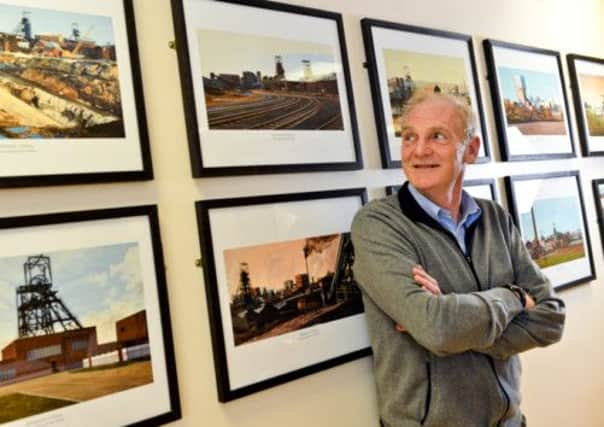Brush with Yorkshire pitmen’s past


When he handed in the last work to managers at NCB offices in Wath-upon-Dearne, near Rotherham, Peter Watson moved onto his next project, and gave little thought to the paintings.
Mr Watson, of Scarborough, thought that as the mining industry broke up, and offices closed, the pictures had most likely been dumped, or spirited away by a coal board worker.
Advertisement
Hide AdAdvertisement
Hide AdBut now he has been reunited with the paintings, after discovering they had ended up at the NCB headquarters in Doncaster, and were subsequently passed to the National Coal Mining Museum.
Staff at the museum in Wakefield had been trying to find Mr Watson after deciding to exhibit some of the pictures in a new exhibition, and were put in touch with him by chance.
The artist said: “I was born and brought up in Beverley in the East Riding, and had never visited South Yorkshire until I met my wife Rita at college. She came from Wentworth, Rotherham.
“As soon as we went to see her parents there I was really struck by the industrial landscape, the cooling towers and blast furnaces and slag heaps. I thought those landscapes were fantastic.
Advertisement
Hide AdAdvertisement
Hide Ad“We lived in Richmond, North Yorkshire, and I was working as a teacher but decided to do pictures of the pits. I approached Rotherham Library, which then exhibited work in its corridors.
“A week or two later I was phoned by a chap who worked for the coal board, and he asked me if I would be interested in doing some paintings of collieries in the South Yorkshire area.”
Mr Watson said the phone call led to excursions to the 14 pits in the late 1970s and early 1980s, with a new colliery project being suggested by the NCB each time a painting was submitted.
He said: “The manager I spoke to said the NCB wanted a record of the pits because they would be closing soon and it would be good to have the paintings to remind people how they looked.
Advertisement
Hide AdAdvertisement
Hide Ad“I was just given completely free rein, there was no health and safety, I would just turn up and be told to help myself, clambering over rail lines and slag heaps.
“I think some of the pits did regard me as a kind of Grim Reaper. When I arrived at one, the manager, who was a bit of joker, put his head in his hands and said, ‘Oh no! It’s Peter Watson’.”
Mr Watson, now 67 and a full-time artist, said he “couldn’t really believe” he painted the highly-detailed works when saw them for the first time in 30 years.
He said: “The size of the works and the detail is quite staggering; when I saw them again it brought back memories of me getting the paints out after tea and working on them at the dining room table.
Advertisement
Hide AdAdvertisement
Hide Ad“I was working full-time and had two young children and it amazes me that I had the time and dedication to produce them.”
When the coal board commission ended, the artist won new work painting football, cricket and rugby grounds, but said he had now “returned to his roots” painting Yorkshire Wolds landscapes.
And it was an exhibition of those paintings at Bridlington Spa which led to the chance recognition of his name by museum curator Emily Green, who had been searching for him on the internet.
“I was away at the time, but when I came back there was a message on the answering machine asking if I was the same Peter Watson who had painted collieries in South Yorkshire,” said the artist.
Advertisement
Hide AdAdvertisement
Hide Ad“I phoned them back and the museum told me the pictures still existed and were in storage. I was completely staggered and went to see them. It was fantastic.”
Miss Green said she had wanted to track Mr Watson down after a colleague found his pictures and asked her to find out if there were any issues with copyright.
She said: “A museum visitor had also asked about him because they were trying to find out about a picture he had done of Elland Road football stadium.
“I felt like a bit of detective, and I think when he got my message through Bridlington Spa he was amazed and shocked to rediscover his work. He really had forgotten all about them.”